- Undergraduate
Bachelor's Degrees
Bachelor of ArtsBachelor of EngineeringPartner School Dual-DegreeUndergraduate AdmissionsUndergraduate Experience
- Graduate
Doctoral Degrees
Doctor of PhilosophyPhD Innovation ProgramDoctor of Medicine-PhDGraduate AdmissionsGraduate Experience
- Research
- Entrepreneurship
- Community
- About
-
Research Quick Takes
Unobtrusive Implantable Device

Professor Wei Ouyang 's recent article in Neuron, entitled " An implantable device for wireless monitoring of diverse physio-behavioral characteristics in freely behaving small animals and interacting groups ," was featured as a Science Highlight by the National Institute of Biomedical Imaging and Bioengineering (NIBIB). "This work reports a wireless implant that captures a diverse array of previously inaccessible physiological data taken during various behavioral tests, which has the potential to unlock numerous avenues of research such as the effects of brain disorders and treatments on sleep," says Ouyang.
Efficient Hydrogen Production

Research Associate Anand Tiwari, PhD student Saifur Rahman, and Professor Will Scheideler co-authored " 3D Printed Microlattices of Transition Metal/Metal Oxides for Highly Stable and Efficient Water Splitting " published in Advanced Materials Technologies . The paper presents a novel 3D printing method to create low-cost and efficient electrodes for electrocatalytic hydrogen production. "The resulting materials have shown exceptional durability and electrocatalytic activity, making them promising for large-scale water splitting and sustainable hydrogen fuel production," said Rahman
EIT for Early Bleed Detection

PhD students Spencer Bertsch Th'19and Navid Rashedi, alum Yifei Sun Th'22, and Professors Ethan Murphy(first author) , Jonathan Elliott, Ryan Halter, and Vikrant Vaze —along with DHMC and Mayo Clinic researchers—co-authored " Non-invasive biomarkers for detecting progression toward hypovolemic cardiovascular instability in a lower body negative pressure model " published in Scientific Reports. The paper summarizes how electrical impedance tomography (EIT) can be used as a novel marker for early bleed detection.
Guarini 2024 Best Poster Award
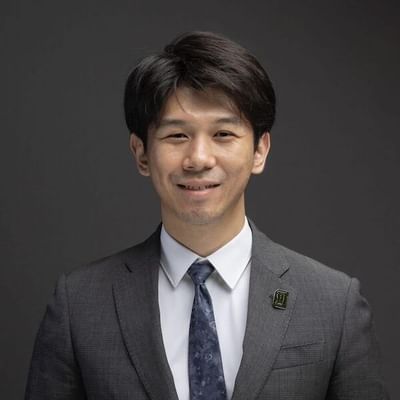
PhD student Huan Zhaowon the best poster award at Guarini's 2024 Graduate Student Poster Session . Titled "Additively Manufactured Metamaterial using Piezoceramic-Polymer Composite," the poster presented an innovative way to fabricate piezoelectric composites with improved mechanical, thermal, and electrical performance. This research—part of Yan Li's Group and supported by NASA—addresses the need for damage monitoring and process control for future in-space manufacturing.
Liquid Metal Wires for Wearable Electronics
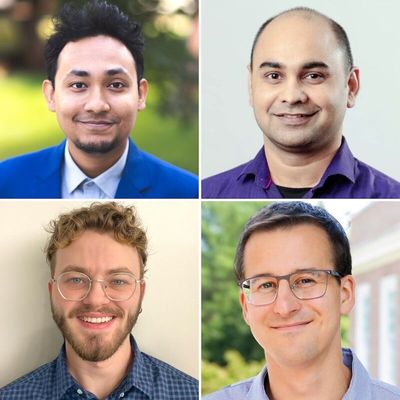
PhD students Saifur Rahmanand Simon Agnew '22, Research Associate Anand Tiwari, and Professor Will Scheideler co-authored " 3D Woven Liquid Metals for Radio-Frequency Stretchable Circuits " published in Advanced Materials Technologies. "We've developed a new way to make better, more comfortable wearable electronics. The key is a special type of interwoven wire made from liquid metal that can stretch and bend without losing its ability to transmit signals."
Evolving Ontologies
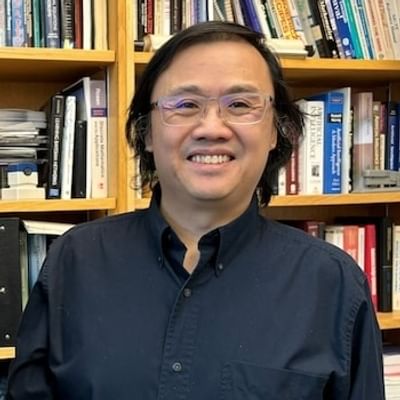
Professor Eugene Santos co-authored " Bayesian-knowledge driven ontologies: A framework for fusion of semantic knowledge under uncertainty and incompleteness " published in PLOS ONE. The paper describes how to fuse multiple conflicting ontologies into a single knowledge base. "Biomedicine's rapid advancement is inundating us with new words, labels, and concepts that can be duplicative or even contradictory," says Santos.
Interface Design for Bioelectronic Implants
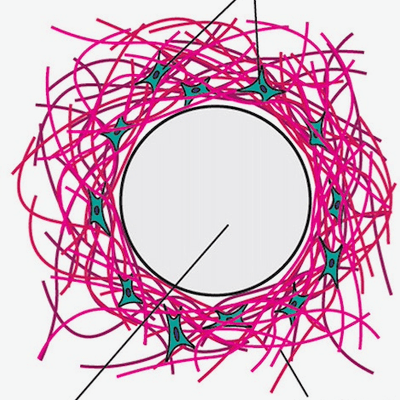
Professor Alex Boys co-authored " Bioelectronic interfacial matching for superior implant design " published in Cell Reports Physical Science , including discussion of the relevance of different mechanical and electronic factors. "Interface design is an important aspect for any material that is implanted into the body," says Boys, "and we wanted to provide a framework for researchers who work on bioelectronics to think about this important issue."
Grad Students Shine at NEAAPM
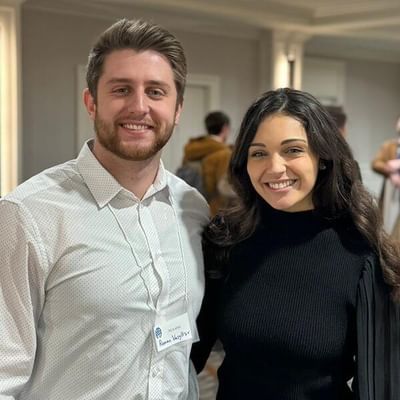
PhD candidates Roman Vasyltsivand Savannah Decker—both in the Optics in Medicine labs and the Medical Physics Education Program —tied for first place in the early investigator competition at the New England Chapter of the American Association of Physics in Medicine (NEAAPM) meeting in Quincy, Mass. Savannah presented "Improving Cherenkov Dosimetry via Quantitative Skin Tone Analysis," and Roman presented "Fast Imaging of a Novel Conformal Scintilator Mesh for 2D In Vivo Validation During UHDR PBS Proton Therapy."
SPIE Medical Imaging Conference
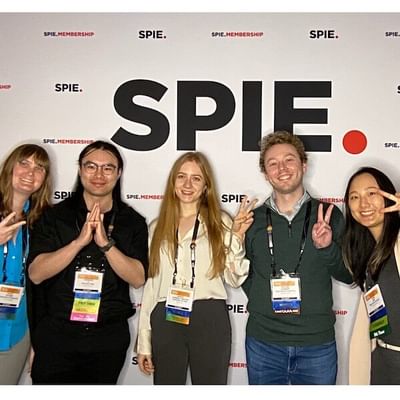
At the SPIE Medical Imaging conference, PhD students Yuan Shi( Halter Lab ), Chengpei Li, Haley Stoner, and William Warner Th'17 Th'19( Paulsen Lab ) presented their work on image-guided surgery, including talks on "A surgical navigation framework for image-guided transoral robotic surgery" and "Intraoperative stereovision cortical surface segmentation using fast segment anything model," and posters on "Large MRI specimen submersion phantom design" and "Smart line detection and histogram-based approach to robust freehand ultrasound calibration."
Materials for Hydrogen Storage

Professor Geoffroy Hautier is a co-author of " Small-pore hydridic frameworks store densely packed hydrogen " published in Nature Chemistry . The study reveals a way of achieving high volumetric gas storage in nanoporous materials. "Transforming water to hydrogen is a promising way to store energy, but hydrogen gas takes up a lot of space. Developing materials that can absorb reversibly and 'pack' this hydrogen in a tighter space would reduce the volume needed for storage," says Hautier.
Embracing Ethical Research
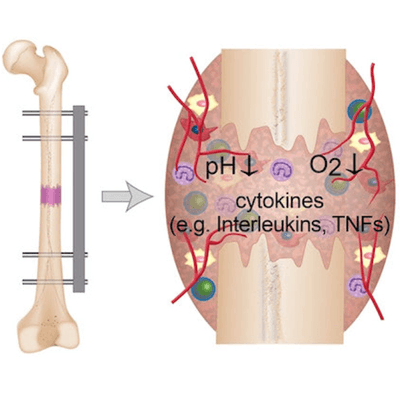
First-year PhD student Amritha Anup Th'23is first author of " Embracing ethical research: Implementing the 3R principles into fracture healing research for sustainable scientific progress " published in the Journal of Orthopaedic Research . Anup and her international co-authors, as well as professor Katie Hixon , explore recent advances "to replace, reduce, and refine [3R] animal experiments in musculoskeletal, bone, and fracture healing research."
Multiplex Ultrasound Imaging
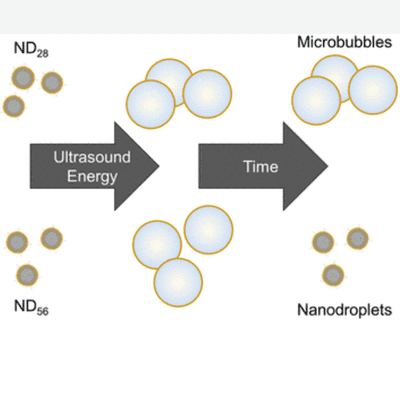
Austin Van Namen Th'21, Sid Jandhyala Th'22, Catalina Spatarelu Th'22, and Professors Kim Samkoe and Geoff Luke are coauthors of " Multiplex Ultrasound Imaging of Perfluorocarbon Nanodroplets Enabled by Decomposition of Postvaporization Dynamics " published in Nano Letters . The paper describes a method to use phase-changing nanodroplets as ultrasound contrast agents for imaging multiple biomarkers simultaneously.


